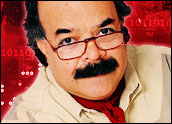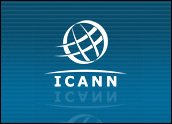
E-commerce — recently created by the Internet and Web sites — is now a fully matured mammoth and has connected with a few big punches in the first round of fights between the old and new economy. What once had been just a simple information page for a business on the Internet is now, in a majority of cases, a powerful Web-portal-come-real-money-making-gatekeeper to the entire organization.
This fight has created a thick forest of strange and weird online name identities, jamming and clashing with each other, causing massive confusion among names of corporate organizations, institutions, products and services of all types and all sizes.
As the tidal wave of our Internet-savvy cultures becomes a global phenomenon, organizations are now faced with critical issues of re-branding and re-naming to stay in this new race for better name identity and global visibility.
Local or Global-Cyber-Branding
At this very second, organizational names are skating at bullet speed across this digitally formatted flat new Earth, without borders, passports or time zones. No delays, no barriers, no major costs — just access. Across the street or across the continent — it is basically the same format.
Today, it’s all about an organization’s names and their high visibility for global e-commerce, instant accessibility on the Internet, quick search ability on the Web, memorability of distinct names by an overly strained populace, ease of typing for tired fingers, and pleasant vocalization of such names and Web experiences by customers all over the world.
The name identity of a business is now the only true measure of how a name works in a maze of countries and cultures. Economic powers are defined by their cyber-presence and simultaneous accessibility in targeted countries. For this, big, cumbersome visuals are replaced by fluid URLs, thus creating a new name economy, accessible only through online name identities.
In contrast to the old-fashioned, big branding with flashy logos, colors, stripes and fancy fonts, it’s now all about short, simple, highly effective, globally trademarkable names with matching URLs. It is all about a real alpha-structure of a name and its direct functionality on search engines, rather than a logo design.
Good names have a direct impact on corporate persona and positively affect customers and media and influence public opinions at large. It’s time to explore the real power of names, new laws of marketing and to learn how to play this sophisticated name game on this digitally flat Earth. Discover the fine art of global business naming.
All the Good Names Are Gone — Really?
Organizations, believing that all the star-quality names had been taken, had no choice but to accept silly, weird domain names to fit their Web sites. A myth was established by branding firms about a serious shortage of business names. If there never was a shortage of good names, the problem was only in the naming expertise. Basically, names must be sober and respectable, related to the cause, clearly available and globally protectable, with an identical dot-com.
Chasing new customers for new products and services in new markets with new brand names is the new game. This borderless marketing provides unlimited access to new customers as long as they can see you and find you on the Internet. Good names climb to the top on search engines and appear pertinent, therefore quickly inviting readers to open your Web site. So name properly. There is a huge difference between a massive branding exercise and highly specialized naming expertise. Consider: What types of names will hurt your marketing big time?
Three Types of Names
1. Long geographic names. This seriously hurts international marketing. The same long names get initialized, causing massive confusion with strange companies worldwide, and are impossible to find on the Internet.
2. Words on a string. All kinds of names for all kinds of reasons are necklaced, combined strategically or accidentally, sometimes making no connections at all. Customers hate them, yet corporations prolong the agony.
3. Initials. The entire global business sector has the strangest and most unusual collection of initials. Initials were simply collected and appended as a proof of their long history, while somehow the customer is living in today’s time and with no regard to the previous century. Acronyms often emulate different personalities, causing confusion.
Right now, only a very small percentage of business name brands can pass the acid test of global suitability and registerability. It is imperative that executives be fully aware of such faults so they can formulate their long-term corporate communications strategy.
Sometimes, different departments are blamed for a lack of results but no one dares to question the name or its peculiar structure, with any negative hidden messages it might be broadcasting. The facts should be on the table, no matter how bad.
The name economy is here to stay. Today, to identify or search or access a company or a product on e-commerce, there is no other device known to us except a name. What’s your brand name?
Naseem Javed, author Naming for Power and alsoDomain Wars, is recognized as a world authority on global nameidentities and domain issues. Javed founded ABC Namebank, aconsultancy he established a quarter century ago, and conducts executiveworkshops on image and name identity issues. Contact him at [email protected].




















































To me, domain names are becoming less and less important. As search engine technology improves, all that’s needed to find a product is the input box.
I rarely guess at domain names anymore – I just goto Google.
It’s similar to the cell phone address book – why remember a # (or domain name) when it can be easily retrieved by simply entering the person’s or company name?